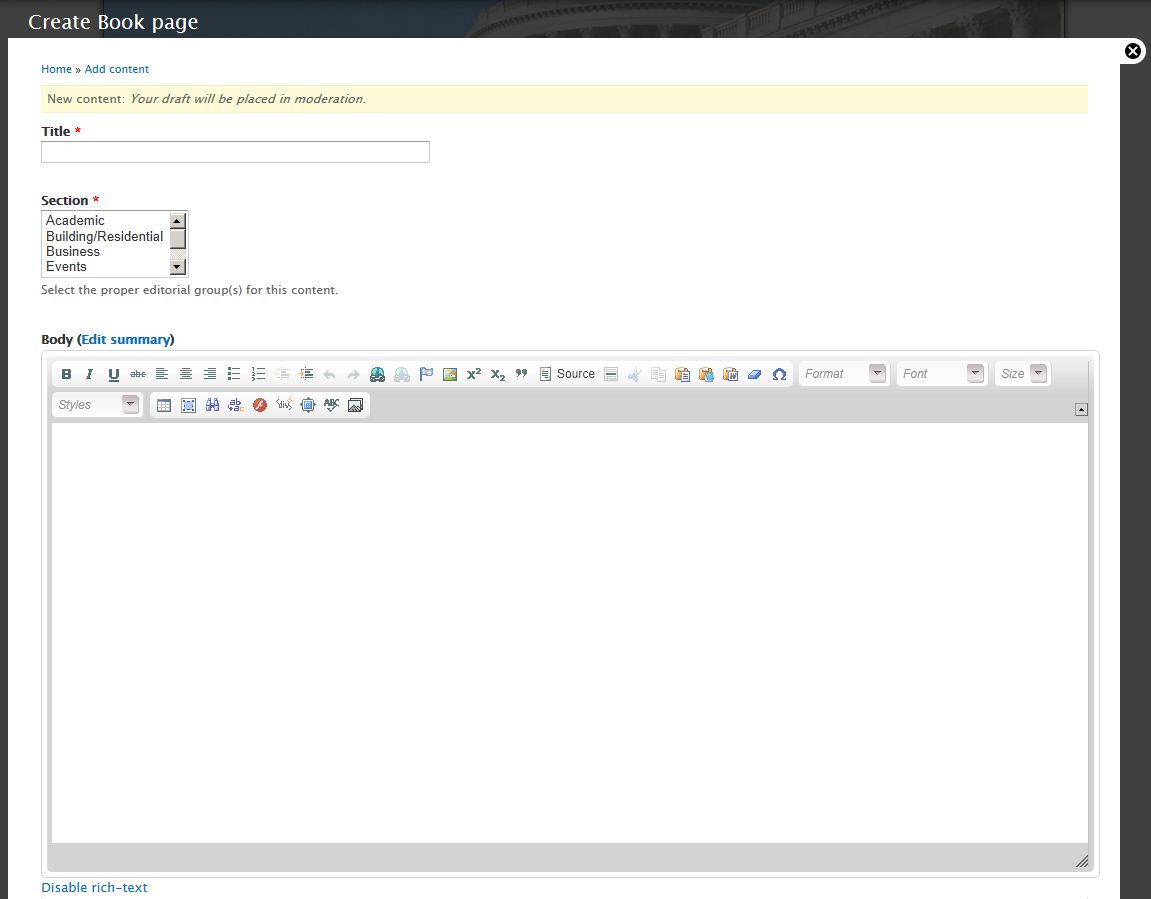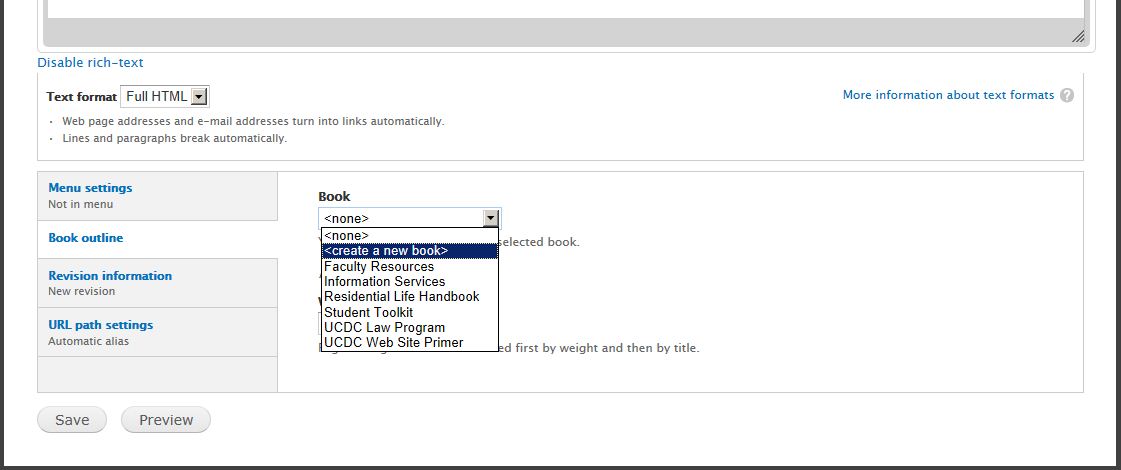A Book is essentially a collection of Basic Pages that are organized under a Table of Contents hierarchy. This enables you to readily associated related topics and present information in chunks. It also provides the added benefit of allowing users to easily jump between topics within the hierarchy.
- After choosing the Book Page from the CREATE CONTENT tab you will see the Book Page template. If you are adding new pages to an existing book you may skip this step by clicking on the Add child page link at the bottom of any book page.
- Fill in the Title field. This will become the name of the page. It also becomes part of the URL for the page.
- Next click on a choice within the Section field to associate the web page with a specific section. There will be one or more sections to choose from. Please choose the one that seems the most appropriate to the content of the page. This is mandatory and must be done in order to save the web page.
- Type or paste text into the Body field. This will be the core content of the page. The palettes in the toolbar of the HTML editor should be similar to those in Microsoft Word. You can learn the function of each tool in the tool palette by hovering over the icon. Most tools relate to a specific editing or HTML function. The Source tool enables you to edit the actual HTML code. Use this feature with great care.
- TIP: If you copy text from another document to paste into the Body, use the Paste as plain text button. (It looks like a clipboard with a notepad.)
- You may want to add images within the body of the page. Here’s how.
- You may also want to link to other web pages within the web site, external URLs or to documents. Here's how.
- TIP: Any time that you want to exit out of this module without saving your work, click on the Cancel button. It can always be found in the upper right area of your web browser. It looks like an appendage with a white "x" inside a black circle.
- Below the Body field is the Text format pull down menu. There is usually no reason to switch the Text format. Please leave it set to the default which is Full HTML.
- At the bottom of the page you will see multiple vertical tabs. Please ignore these except for the Book outline tab. Also, please ignore the Provide a menu link. Do not check it. Improper menu linking can create serious issues with the web site. If you would like to link your page to the main menu, please contact Rodger Rak or Marc Sandalow.
- The Book outline tab is what sets a Book page apart from a Basic Page. Using this tool you can create a new book or associate your page with an existing book.
- To associate a Book page with an existing book, select the appropriate book from the Book pull down menu.
- Next verify the page's association with a Parent item. The default parent item is the top level page. (Usually the first page that you create within a new book.) You may change this association by selecting another tiem from the Parent item pull down menu. Use this option to create a sub pages within sections of the Table of Contents hierarchy.
- Finally, each page has a weight. By default the Table of Contents hierarchy orders items alphabetically. However you may change the location of a book page by changing its weight. To do so choose a number from -15 to 15 from the Weight pull down menu. Pages with negative numbers float about pages with positive numbers. So a page with a weight of -15 floats up to the very top of the hierarchy. A page with a weight of 15 sinks down to the very bottom of the hierarchy.
- To create a new book, select <create a new book>. Your new Book page automatically becomes the top-levle page of the book and lends its name as the title of the book.
- Click the Save button to save the page. Depending on your status as a Content Creator or Publisher you may need to send this page to review or publish to the web site.
- TIP: After you create the first page of a new book, you can add additional pages to the book by clicking on the Add child page link at the bottom of any book page.
- NOTE: All Book pages have a navigation menu at the bottom of the page to assist you in quickly moving through the Table of Contents hierarchy.


